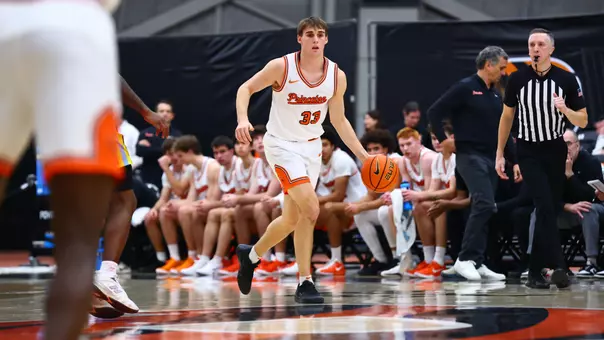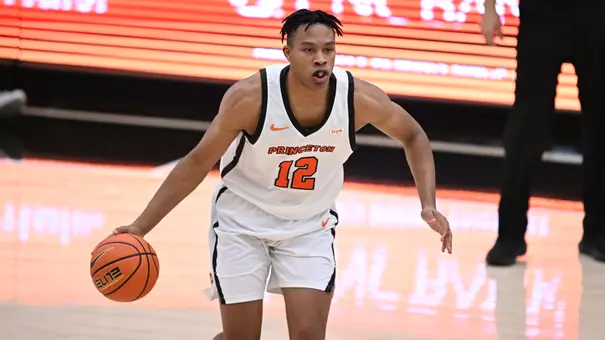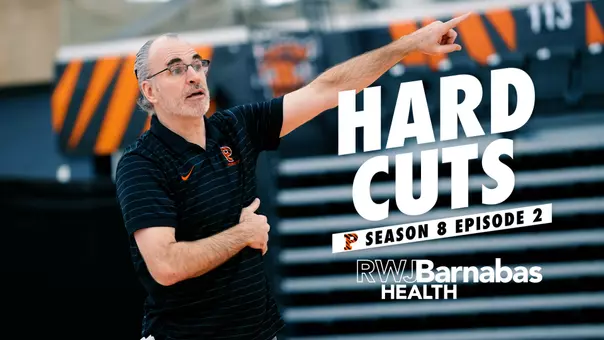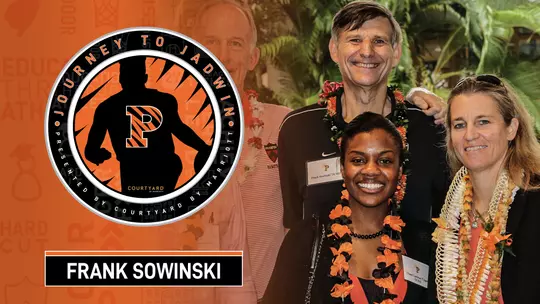
Journey to Jadwin - Frank Sowinski
5/14/2020
Do the best you can. You can count on me.
Frank Sowinski ‘78’s Journey to Jadwin and life after has been guided by those two five-word sentences. The first was given to him by his mother while the second came from both his father and his years spent visiting family in coal mining country in northeast Pennsylvania.
The grandson of coal miners, Sowinski was born in North Arlington, New Jersey, then moved to East Hanover, New Jersey, when he was two.
While Sowinski’s family lived in New Jersey, every third week they would visit family in Pennsylvania. Sowinski learned lessons on hard work and commitment throughout these years.
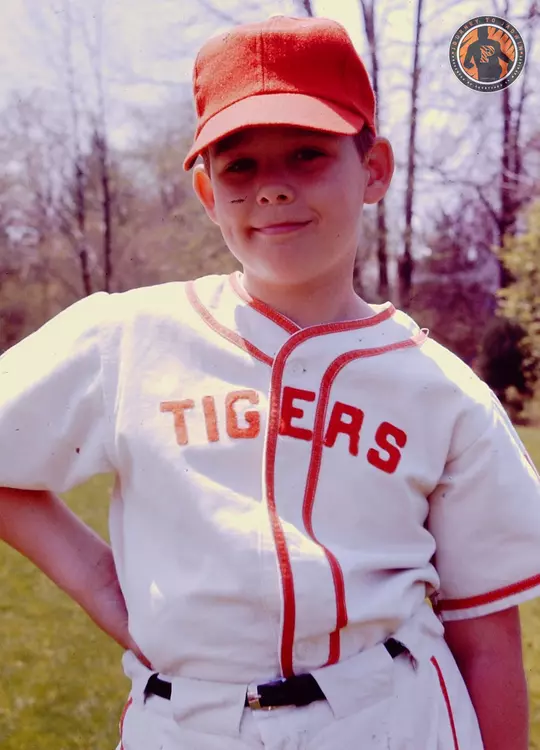
“Both my grandfathers were coal miners outside of the Scranton, Pennsylvania, area,” said Sowinski. “I had a chance to go up there a lot as a kid; my dad was the only one of his brothers to get a college education and that was because of the G.I. Bill and World War II. He met my mom, who was the daughter of a coal miner, five miles up the road.”
Those early years spent visiting his family in Pennsylvania would heavily influence Sowinski.
“There’s a conversation that you live on the right side of the railroad tracks, well that wasn’t the conversation, they lived on the railroad tracks. 75 feet from their front door were the four tracks that took all of the coal out of northeast Pennsylvania, the house literally shook at night…it was a very tough community and predominantly coal miners. People did things on their own. You learned a lot about hard work back then.”
His interest in the sport of basketball started in sixth-grade thanks to a book; incredibly, this book would foreshadow Sowinski’s future.
It was the best 65 cent investment I’ve ever made. It was a book called ‘The Sense of Where You Are’ by a guy from Princeton named John McPhee about a basketball player named Bill Bradley. There was an awful lot in the book about how Bradley became a great player."Frank Sowinski
"He was basically on his own in a place called Crystal City, Missouri, he had incredible dedication. His rule was he wouldn’t leave a spot on the floor until he had made 10-out-of-13 and having read that in sixth grade, that was about the time the New York Knicks had their first championship run. They won their first title in 1970. Bill Bradley was one of the starting players there, that’s what really got me hooked.”
When Sowinski knew he loved basketball, it became time to get a hoop for his home.
“In typical coal miner way, we went down to a junkyard, got a corroded pipe, dropped it in there, put a basket up and that’s what started it,” said Sowinski.
It got to the point where first I got cotton nets but I was wearing one out every 30 days. Then I got nylon nets, those went about 60-70 days before they would wear out. If Bill Bradley wasn’t moving until he made 10 out of 13, then I wasn’t moving either. It’s a commitment to the driveway.Frank Sowinski
Sowinski recalls spending hours upon hours perfecting his craft in the driveway, applying the lessons he had learned about hard work.
"I tell this story, my neighbor lived diagonally up the street. He was a blue-collar worker and worked hard, Saturday was his morning to sleep in. At 7:15 a.m. who was out in that driveway shooting the basketball? Me. Mr. Andelino, to this day when I see his son and I say do you remember when your dad opened the window and said ‘Quit bouncing that darn ball!’ So, I waited about a half hour then I was back out there.”
Despite a strong work ethic, Sowinski described himself as a late bloomer in the sport, not making varsity until his junior year.
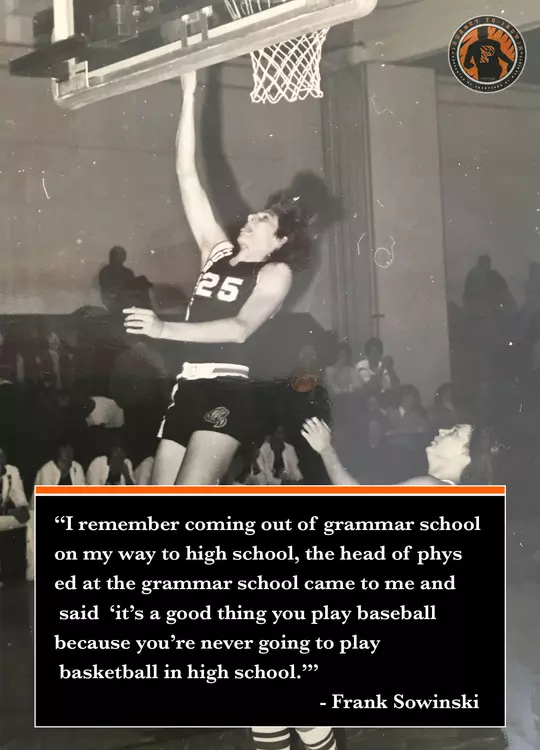
Sowinski would ultimately get elected to the Hanover Park Hall of Fame, becoming one of the only players who wasn’t team captain to do so.
While he was successful at the high school level, Sowinski knew he had to test himself against even better competition.
“Back in the day travel was as far as you could ride your bike,” proclaimed Sowinski. “It wasn’t really until my junior summer in high school that I realized if I really wanted to be a great player I had to go play with some of the best. I went about 20 miles west of Newark to East Orange, New Jersey, and started to play leagues down there. It was very, very good for me.”
Sowinski remembers his first brush with Princeton. Assistant coach Gary Walters was in attendance at one of his County Tournament games his senior year; he went 8-of-10 from the field, outrebounded the other team and held the leading scorer in the county to eight points. Pete Carril would then come and watch Sowinski, but he spent more time on the bench than on the court.
“I played well for the time I was on the floor but got in foul trouble and had to sit down,” said Sowinski. “I remember my mom went up to Coach Carril and said ‘I guess you’re not interested in him anymore’ and I guess it was my behavior on the bench he liked. I was cheering my teammates on, I was trying to give advice to other people and he said ‘When I saw him on the bench, I wanted him more.’ That’s how it all started.”
While he had interest from Delaware, Lafayette and Lehigh, Princeton was an easy choice for Sowinski.
In terms of the opportunities to go places, having Bill Bradley didn’t hurt, but you had Brian Taylor, Geoff Petrie, John Hummer, a whole series of athletes who played professionally.Frank Sowinski
Growing up watching and attending games at Madison Square Garden, having the opportunity to play on that floor at the Holiday Classic also excited Sowinski.
Sowinski went on to have a stellar career at Princeton, helping the Tigers win Ivy League Championships in 1976 and 1977. The Ivy League Player of the Year in 1977, he was an All-Ivy League First Team honoree in both 1977 and 1978. He scored 1,133 career points and was part of several memorable Princeton victories including a win over No. 2 Notre Dame his junior year then a win over Rutgers his senior year. The previous year, the Scarlet Knights made it to the Final Four and had beaten the Tigers 54-53 in the Round of 32 at the NCAA Tournament.
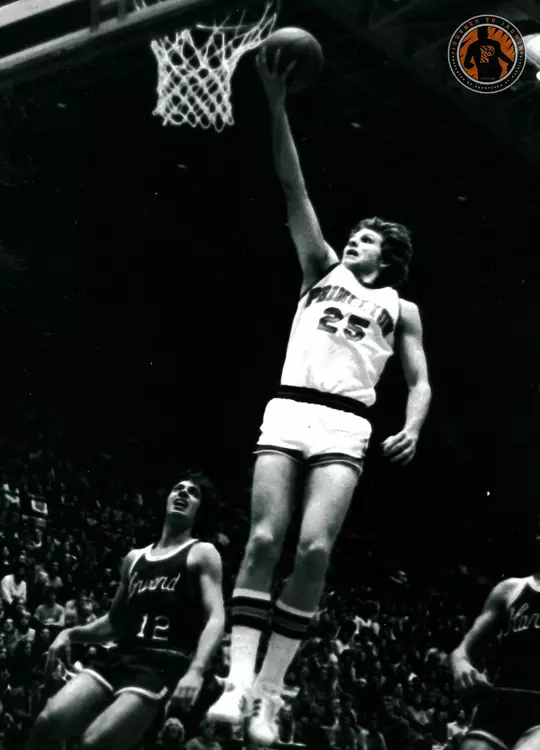
“That was a game (against Rutgers) where I took an elbow to the forehead six minutes in, I only had four points at that point in time,” said Sowinski. “After that I clearly had a concussion because I don’t remember it, but I went 13-of-16, 26 points, we beat them and the memory I’ve been told many times was I sat next to my teammate Rich Rizzuto at halftime and asked him what the score was three times. Another teammate, Robert Kleinert, came up to me and said ‘you don’t look very good, just keep doing what you’re doing.’”
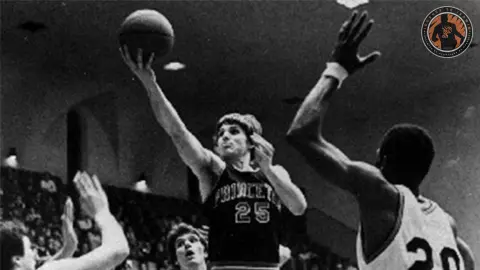
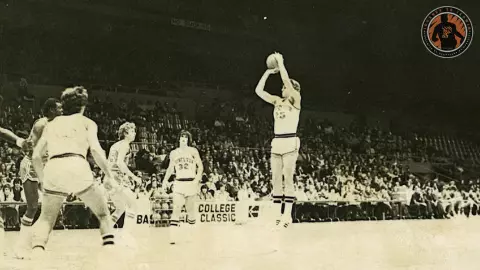
Along with his mother, there was only one other person that called him Frankie.
That person?
Pete Carril.
It didn’t take long for Carril’s attention to detail to rub off on Sowinski.
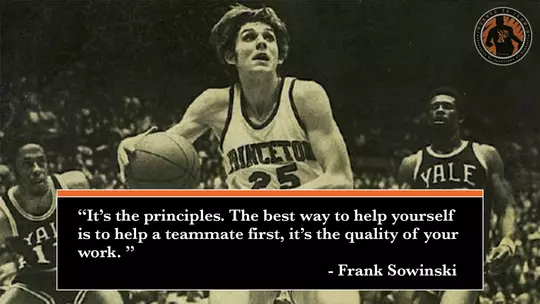
“I can remember getting yelled at because I didn’t set the right screen 30 feet away from the ball, that was the little thing” said Sowinski. "It wasn’t the next pass where that screen made a difference, it was two passes from there.”
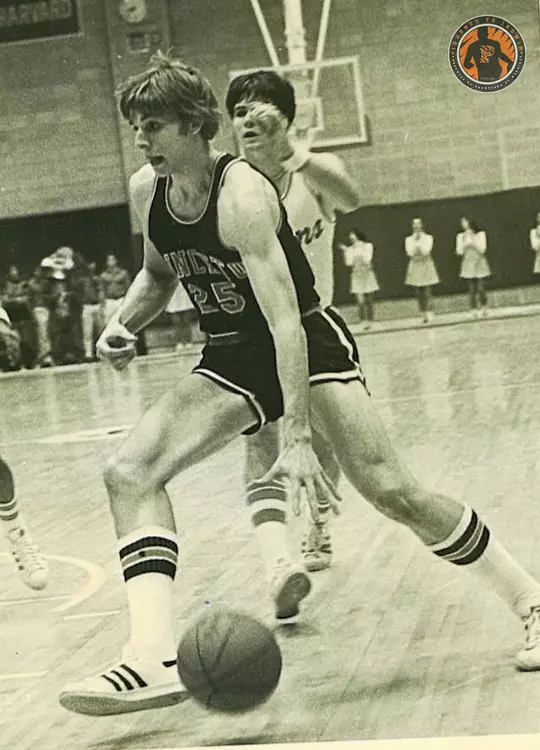
During the summers of his sophomore and junior years, Sowinski had the opportunity to work out with Bradley, the man he had read about and watched win championships with the Knicks as a kid.
“We were relatively the same size and our workouts were a lot of running, getting in shape and taking shots. His routine was he wouldn’t leave the gym until he made 16 shots in a row," said Sowinski. "They were 15-foot shots so they were very makeable, but four from the right corner, four from the right elbow, four from the left elbow then four from the opposite corner, so 16 shots in a row. He could make 13 or 14 shots in a row and if he missed, we went back to the beginning…this was the work ethic of a guy who was on his way to the Hall of Fame. He had two NBA championship rings and in his last two seasons as a professional that was his work ethic.”
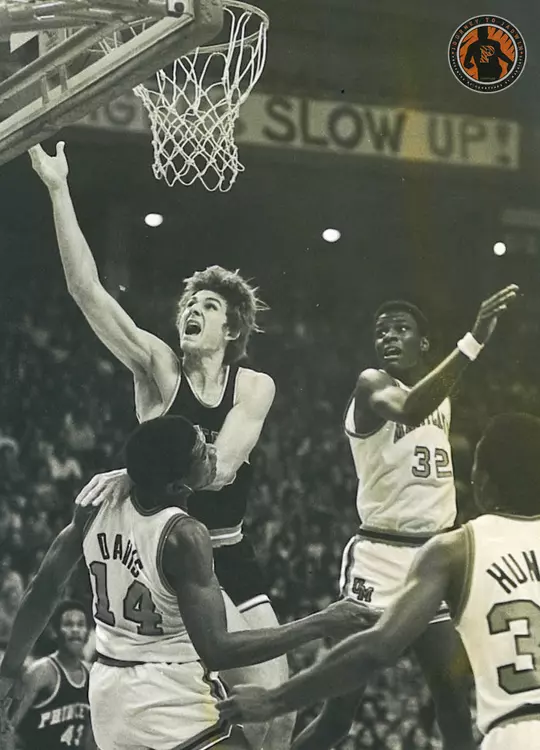
Along with his memories on the court, the memories off it were just as valuable to Sowinski.
“Barnes Hauptfuhrer was two years older than me, but we remain friends and talked this morning,” said Sowinski. “I remain in touch with all of my teammates, Doug Snyder who was a teammate and roommate, we called Coach Carril a few weeks ago just to check in. You can go in decades later, they’re some of the strongest bonds I’ve ever had. To top it off, when I got to Princeton my wife Julie was a student there in the class of ’80.”
Along with the relationships, Sowinski is thankful for the growth opportunities Princeton presented him with.
“I am most thankful to Princeton for the opportunity it gave me…it was incredibly challenging, it was hard. Getting some of Coach Carril’s most candid feedback, it was hard."
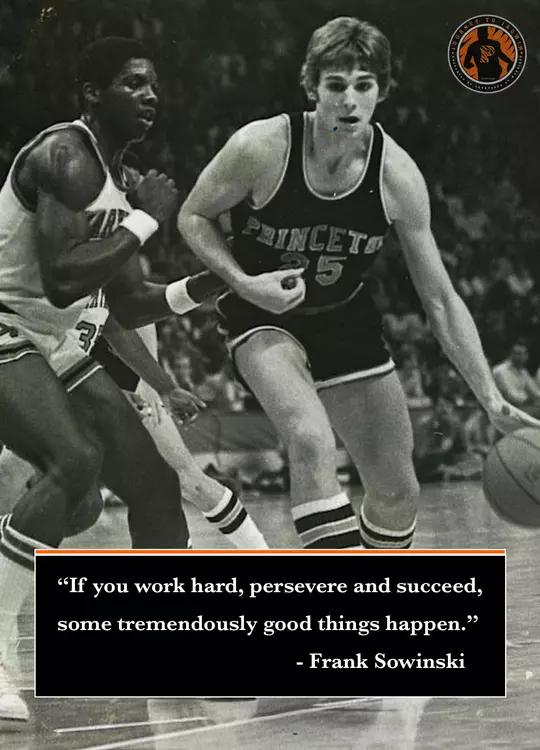
After graduating, Sowinski was drafted by the New Jersey Nets and went on to play professionally in Spain and Italy. He has worked for companies like Dun & Bradstreet and PriceWaterhouseCoopers Consulting while also chairing the Princeton Varsity Club and previously coaching his children’s AAU teams.
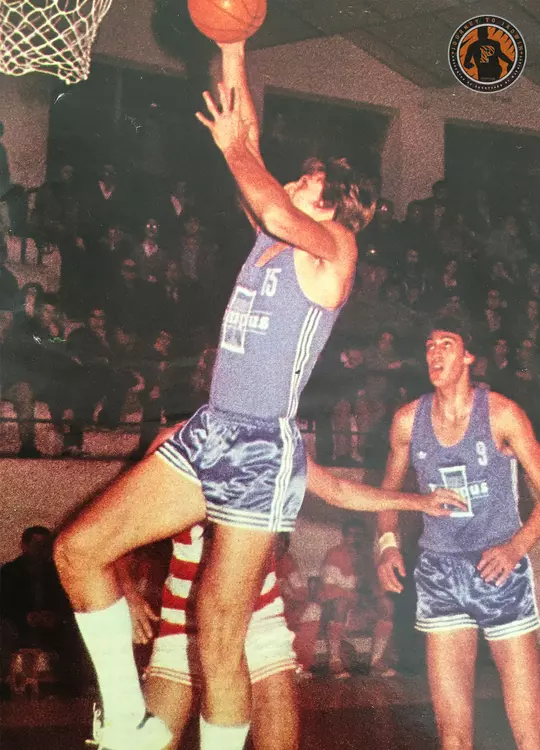
Since 2008, Sowinski has ran a career mentorship program for the men’s and women’s basketball teams at Princeton. Due to the COVID-19 pandemic, most students lost their summer internships.
His response to the lost opportunities?
“We’re working with eight or nine basketball alums who are saying they could come up with a virtual project or virtual internship for students who are qualified and have the necessary skillset. When you make a difference in someone else’s life is probably what makes you most proud."
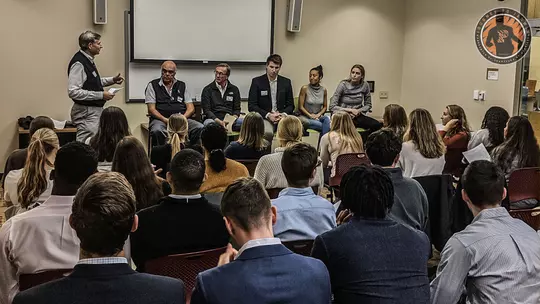
I think I had this before I showed up at Princeton, but Princeton basketball proved with no doubt whatsoever, it ain’t about you.Frank Sowinski
Sowinski always did the best he can and to this day, you can always count on him.
You can connect with the Courtyard Princeton online at Marriott.com well as on Facebook and Instagram.

